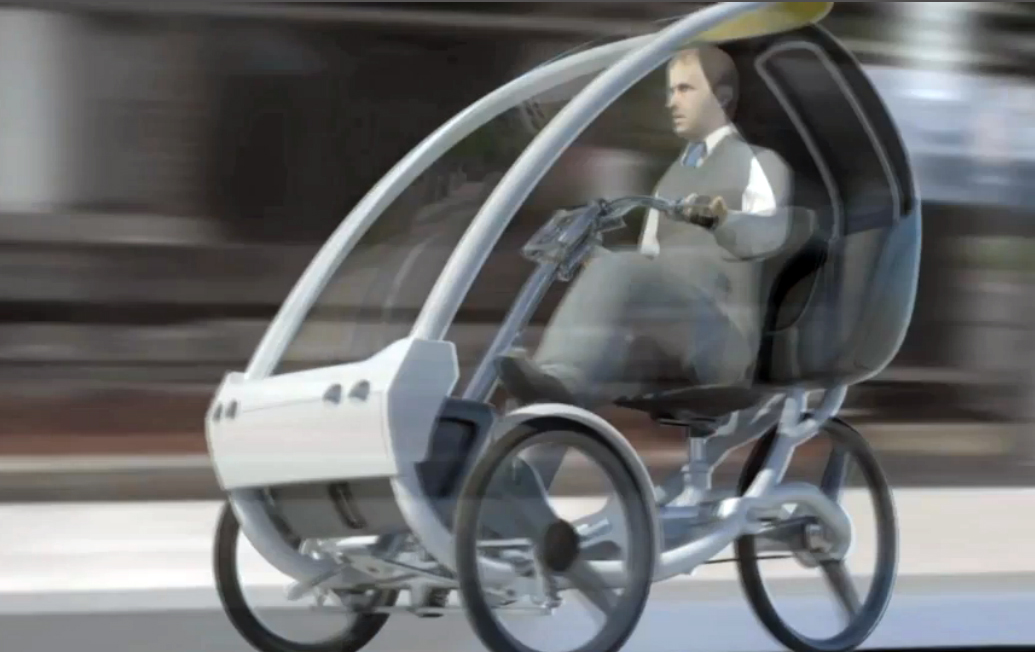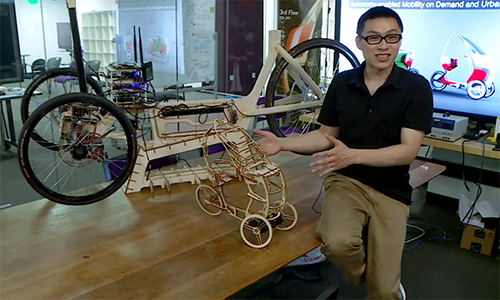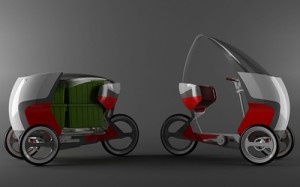A Vehicle for the Future
-
-
slice.mit.edu
- 3
Filed Under
Recommended


What do you get when you take three wheels, an electric motor, and autonomous capability? An entirely new vehicle that could revolutionize the way we live—at least that’s the vision of research scientist Kent Larson and Michael Lin SM '07, SM '10 and the Changing Places group in MIT’s Media Lab. The group created the Persuasive Electric Vehicle (PEV) as part of a strategy aimed at reimagining how we’ll live in denser cities of the future. The PEV includes shared properties similar to Hubway and the ride service capabilities of Uber, but the vehicle’s autonomous capability sets it apart. “We’ve come to realize that the ideal mobility in the city combines three features,” says Larson. “Shared use, electric drive, and thirdly you add autonomy.”

The vehicle is designed to autonomously travel to a given pickup point where the passenger is located, traveling within bicycle lanes. When the PEV reaches the passenger, they have the ability to operate the vehicle with the electric motor or pedal to their destination. The vehicle is also designed for package delivery, with a roof that secures around the vehicle. “For systems like Hubway, nearly 50 percent of the operation cost is distribution, moving the bikes based on demand,” says Lin. “Since the PEV can move autonomously, it can travel to the customer. And the package delivery aspect of the system offsets the demand influx as packages can be delivered in off-peak travel hours.”
The PEV has been in the works for several years, developed as a collaboration between the Media Lab, AeroAstro, and Megacity Logistics Lab (Center for Logistics). “It was 2006 when we first talked about shifting automobiles from product to service and people thought we were crazy,” says Lin, who has been working in the Media Lab off and on since 2005 while he was earning his master’s at MIT. Today, the PEV chassis and autonomous modules are fully designed and a prototype was built for the Media Lab’s members’ week (October 26-30) and 30th anniversary (October 30).
With a complete prototype, roll-out could be just months away. The PEV has many sponsors eager to test the new technology, including an air force base in Taipei, Taiwan. “The enclosed area is perfect for testing the PEV,” says Lin. “It will be allowed to move within a set area, learning the bike lanes and the surroundings, allowing it to pick up data so it can learn to move on its own.” Other potential tests site includes Andorra and HafenCity in Hamburg, Germany.
Watch a video on the PEV and other projects by the Changing Places group that recently produced by Politico Magazine.
Update: The PEV was recently featured by NPR along with the Changing Places project, CityCar.








Comments
Emil Friedman
Mon, 08/08/2016 5:08pm
How do we prevent terrorists from delivering bombs using autonomous vehicles?
Dwight
Wed, 09/28/2016 2:51pm
Emil, the responsibility issue of autonomous vehicles is its achiles heel. I had thought that by the time I was too old to drive, that I would be able to buy an autonomous mini car, basically an enclosed chair on 4 wheels, order it up with a smart phone to meet me at the front door, do my errands, while the chair found its own parking spot. Then if I was doing this, so were another million persons in my city -- even with a postage stamp size this would grid lock the city! so while the Jetson world is becoming more of a reality, the control of mobility must be closely regulated, and shared to avoid overcrowding and ensure safety.
I think I will have to keep walking to public transportation when I am too batty to drive. But I hope for that autonomous mobile chair!
düşük hapı sipariş
Sat, 02/06/2016 7:22pm
In the future many different means of transportation waiting for us. Our future will be very exciting